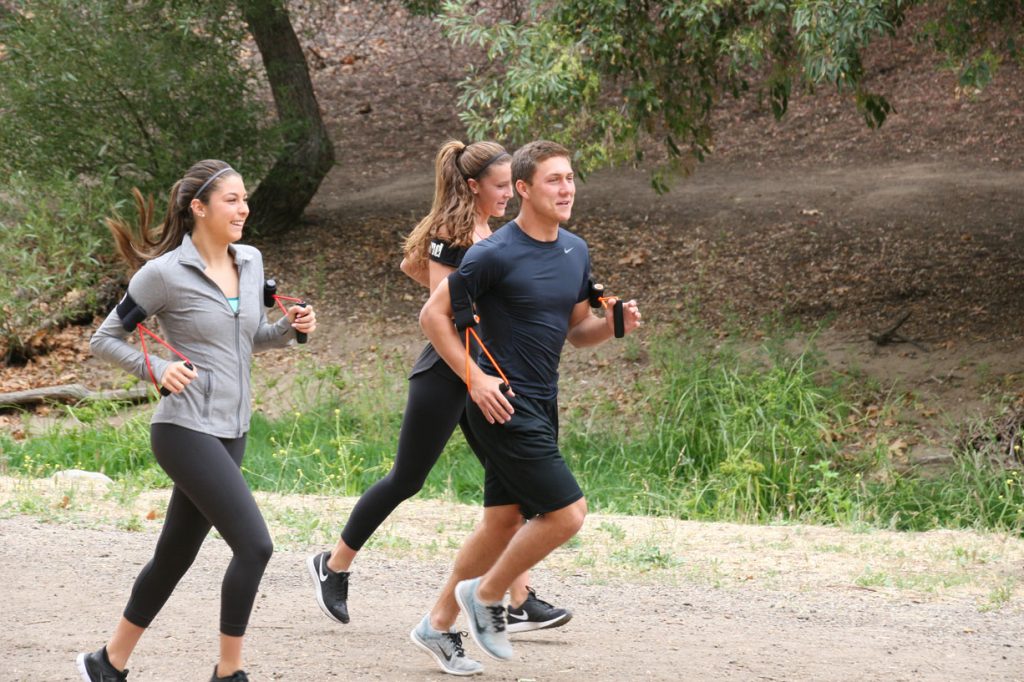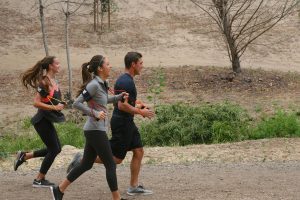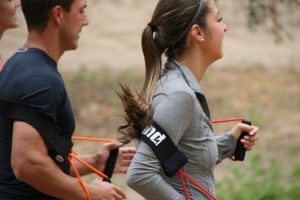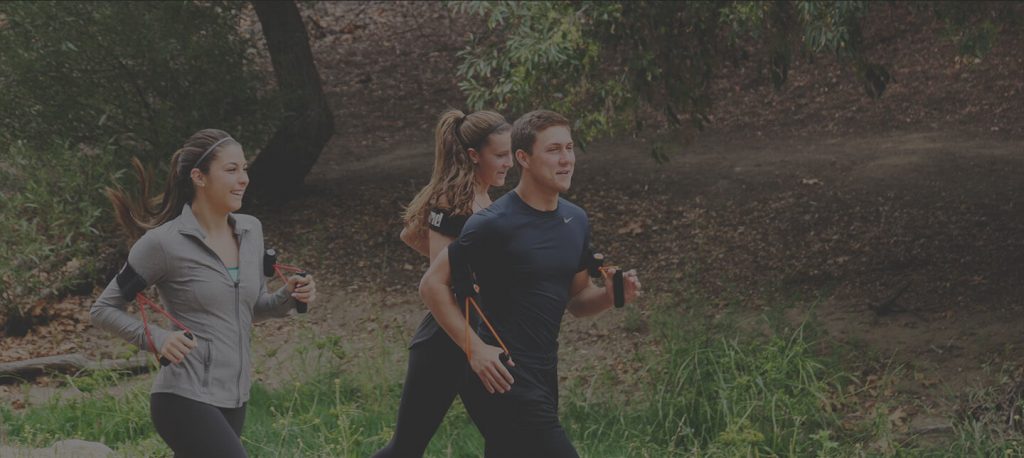- The Runners Band serves to promote optimal proper so-called right-angled arm swinging. Such so called right -angled arm swinging serves to enhance running velocity by minimizing arm waiving during running and hence minimizing body drag and wasted energy. Proper right-angle arm swinging during running calculated to save energy and minimize drag is a technique that has proven to be very difficult to teach to prospective competitive runners.
- The Runners Band is a device which increases the endurance of a runner by supporting the weight of his arms as he runs. It is believed that eliminating or reducing this weight as one is running will substantially decrease the rate at which a jogger/runner tires.
- The Runners Band purpose for the development of the runners band is to provide a simple uncomplicated method of improving upper body walking and running mechanics that facilitate training muscle memory in the arms and upper body of the user
- The Runners Band is a method for training in proper running form
- The Runners Band stretch cords pull the shoulders back and in allowing for better posture and better center of gravity for balance while the user is walking or running
- The Runners Band also takes the thinking out of running and thus allows the runner during running to transfer his mental status to a deeper state of meditation and mental ease thus minimizing any attention that can sometimes be focused and directed on the discomforts of running.






